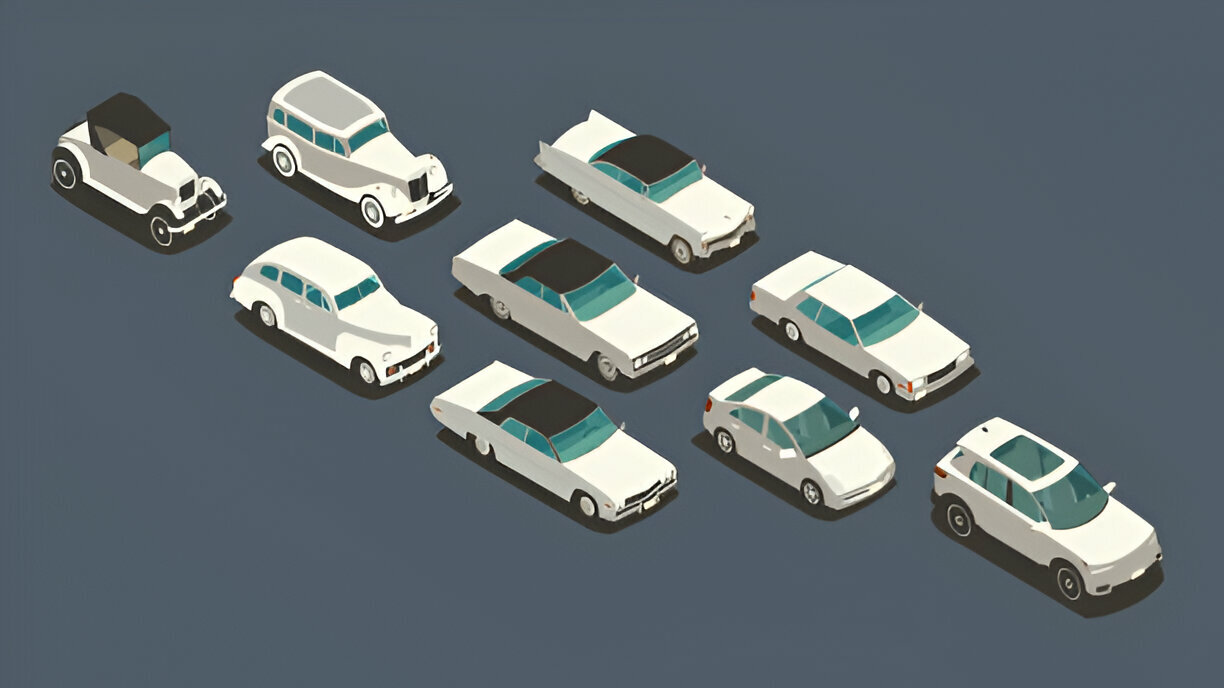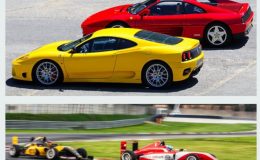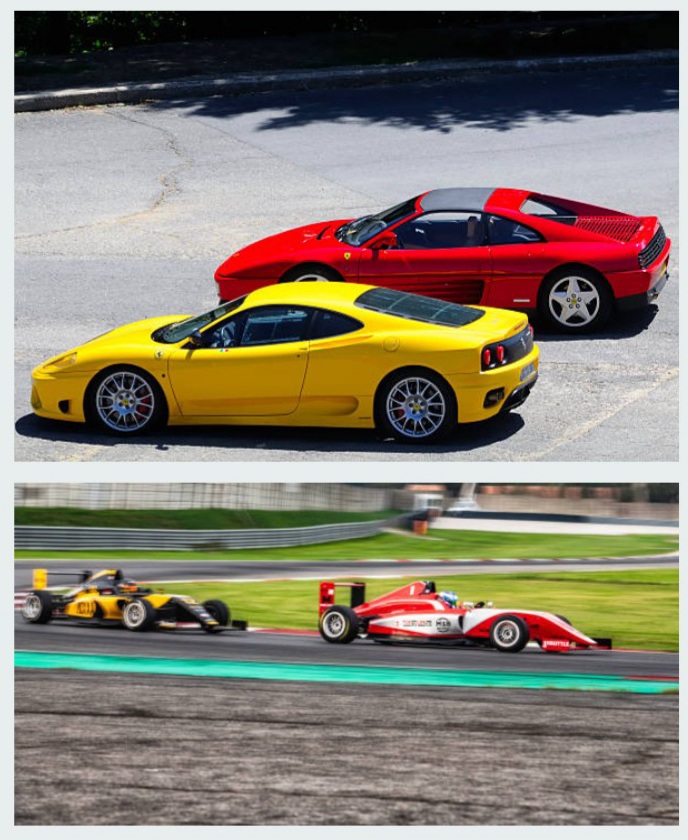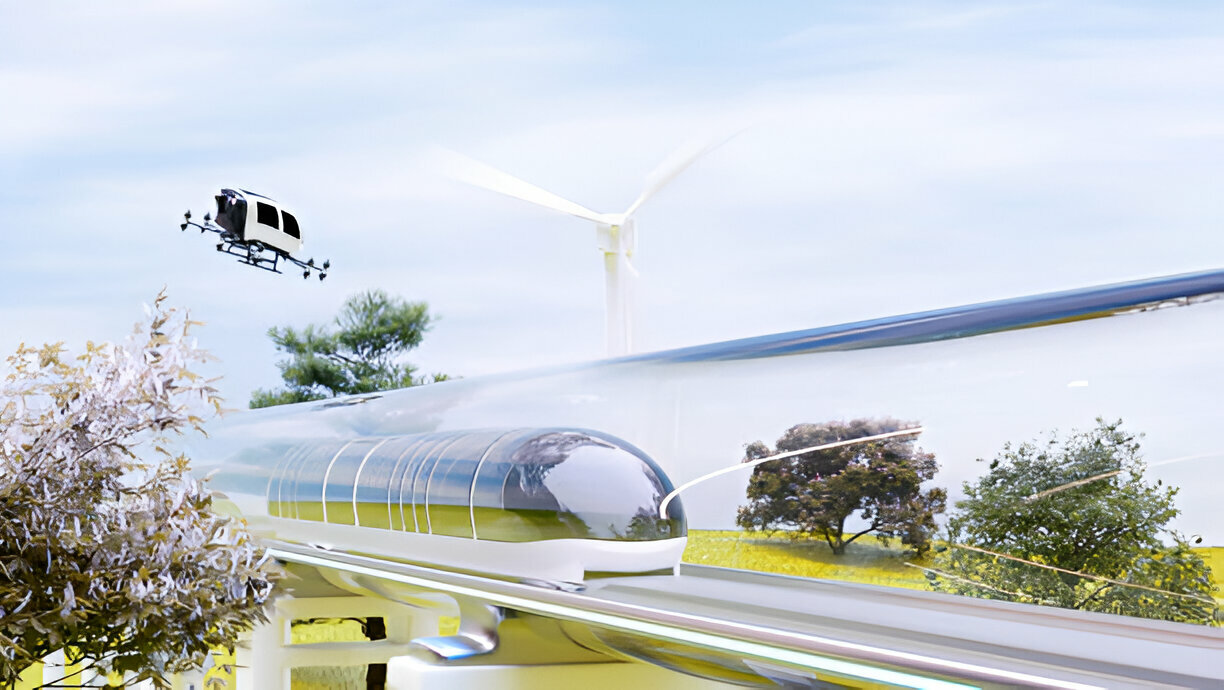Evolution of The Automobile Industry

Just as I mentioned in the first sentence of this article – “Cars have become an important part of our daily lives all over the world and especially here in Nigeria where alternative means of transportation aren’t as readily available. And without any shred of doubt, we would cease to function optimally as the apex species if it weren’t for these machines aiding our intended tasks.” – we’ve come to be extremely dependent on these machines daily for our existence in the modern world. We’ve indeed come a very long way from centuries of riding on horse/donkey/camel-back, to fitting horses with carts/carriages, to steam-powered locomotive trains, to first and second generation cars up until today’s cars, and now – to super-sonic jets; we’ve really as a species collectively conquered this whole “mobility thingy”. The next stage in our evolution undoubtedly – hyper-speed space exploration to which companies such as SpaceX, Blue Origin, and Virgin Galactic are already gearing up towards, actively! Despite the current bleak outlook, our future does seem filled with endless possibilities…
The evolution of the automobile industry however has no doubt been an extraordinary journey marked by slow to medium-paced technological advancements (compared with say the Cell/Mobile-phone industry which is rapid-paced. On a side-note – “Education” is actually the slowest moving industry which is quite ironic), fast changing consumer preferences, and vacillating global economic factors. Here is a “brief” overview of key milestones in the periods/eras thus far:
Invention of the Automobile (Late 19th Century); Karl Benz and the Motorwagen (1885-1886)
Karl Benz, a German engineer, is widely credited with inventing the first practical automobile. In 1885 and 1886, he developed and built the Benz Patent-Motorwagen, a three-wheeled vehicle powered by an internal combustion engine fueled by gasoline.
The Motorwagen, patented in 1886, is considered the world’s first true automobile because it was designed specifically for personal use and not adapted from existing horse-drawn carriage designs and it marked a significant departure from earlier steam-powered and electric vehicles, showcasing the potential of the internal combustion engine for powering automobiles.
Henry Ford and the Assembly Line (1913):
While Karl Benz’s invention marked the birth of the automobile, Henry Ford’s innovations in production techniques revolutionised the industry and made cars accessible to the masses.
In 1913, Ford introduced the moving assembly line at his Highland Park plant in Michigan, for the mass production of automobiles. This system allowed workers to remain stationary as the product moved along a conveyor belt, with each worker responsible for a specific task. The assembly line dramatically increased efficiency and reduced the time required to build a car. As a result, the cost of production per unit decreased significantly, making automobiles more affordable for the average consumer.
Ford’s introduction of the assembly line is often associated with the Model T, a car that became synonymous with reliability, affordability, and accessibility. The Model T, produced from 1908 to 1927 – played a crucial role in popularising car ownership.
Impact on Mass Production and Affordability:
The assembly line transformed the manufacturing process from a labour-intensive and time-consuming approach to a highly efficient and streamlined system.
Mass production led to a substantial reduction in the cost of manufacturing each car. This, in turn, allowed manufacturers to pass on the cost savings to consumers, making automobiles more affordable for a larger segment of the population.
The combination of Karl Benz’s invention and Henry Ford’s innovations fundamentally changed the landscape of transportation, shifting it from a luxury enjoyed by only the elite to a mode of transportation accessible to the general public. The collaboration of these two key milestones in automotive history, the invention of the practical automobile along with the implementation of mass production techniques – set the stage for the widespread adoption of cars and laid the foundation for the modern automotive industry which still benefits us all greatly today and will continue to do so even in the distant future.
Early 20th Century – Rise of Major Automakers
The early 20th century saw the establishment of major automobile companies across Europe and in the United States.
Technological innovations like electric starters, headlights, and more powerful engines improved the functionality and safety of automobiles.
Interwar Period – Streamlining and Styling
In the 1920s and 1930s, automobile design started to focus on aesthetics, with streamlining and styling becoming important considerations. Advances in materials and engineering led to more comfortable and stylish vehicles.
Post-World War II – Economic Boom and Globalisation
The post-World War II period saw a surge in automobile production and consumption, global adoption and higher sales numbers fueled by economic prosperity leading to increased consumer demand which became increasingly challenging for manufacturers to keep up with. Furthermore, the American, European and Japanese automakers contributed immensely to the globalisation of the industry.
1970s – Oil Crisis and Environmental Awareness
The oil crisis in the 1970s prompted a shift towards fuel efficiency and a rethink of the entire industry. Environmental concerns gained global recognition, resulting in the development of emission control technologies which led to the prominence of Japanese automakers whose cars tackled said concerns head-on effectively yet, not breaking the bank either.
1980s – Technological Advancements and Electronics
The 1980s witnessed the integration of advanced electronics, with the introduction of computer-controlled systems, fuel injection, and electronic ignition. Safety features such as airbags and anti-lock brakes became standard.
1990s – Rise of SUVs and Alternative Fuels
The 1990s saw a surge in Sport Utility Vehicles (SUVs) as they heavily gained popularity (and even to this day), blending off-road capabilities with passenger comfort.
Interest in alternative fuels, such as electric and hybrid vehicles, also began to gain more prominence.
21st Century – Electric and Autonomous Vehicles
The 21st century has seen a significant focus on Electric Vehicles (EVs) alongside hydrogen-powered vehicles and other alternatives with advancements in battery technology and increased environmental awareness.
Autonomous driving technology has become a major area of research and development, with more and more companies coming into the fray – investing heavily in self-driving capabilities which leads us to:
Current Trends – Connectivity and Mobility Services
Connectivity Features in Smart Cars:
Telematics: Modern cars are equipped with telematics systems, allowing them to send, receive, and store information. This includes GPS navigation, real-time traffic updates, and vehicle diagnostics.
Infotainment Systems: In-car entertainment systems have evolved into sophisticated infotainment hubs, offering features like touchscreen displays, voice recognition, and seamless integration with smartphones for hands-free calling and music streaming.
Vehicle-to-Vehicle (V2V) Communication: Smart cars can communicate with each other through V2V technology. This enhances safety by providing real-time information about nearby vehicles, helping to prevent accidents and improve traffic flow.
Vehicle-to-Infrastructure (V2I) Communication: Cars can also communicate with roadside infrastructure, such as traffic lights and signs. This connectivity aids in optimising traffic flow, reducing congestion, and improving overall transportation efficiency.
Mobility Services:
Ride-Sharing: The rise of ride-sharing services like Uber, Bolt, Lyft, and similar platforms have transformed the way people access transportation. Instead of owning a car, individuals can use these services on-demand, contributing to reduced traffic congestion and lower individual transportation costs.
Car Subscription Models: Car subscription services allow individuals to access a variety of vehicles for a monthly fee. This model eliminates the need for traditional car ownership, offering flexibility and the ability to switch between different car models based on personal preferences or immediate needs.
Micro-Mobility Solutions: The introduction of electric scooters, bikes, and other micro-mobility options complements traditional transportation methods. These services provide convenient and eco-friendly alternatives for short-distance travel within urban areas. Albeit this too has brought upon some new problems – such as charging fire hazards when recharging these e-scooters and e-bikes.
Autonomous Mobility Services: The development of autonomous or self-driving vehicles is expected to further revolutionise mobility services. Companies are exploring the deployment of autonomous taxis and shuttles just like this driverless pod – for the provision of safe and efficient transportation for individual(s) without the need for a human driver.
Data and Analytics:
Big Data in Transportation: The connectivity of vehicles generates vast amounts of data. Manufacturers and service providers regularly analyse this data to improve vehicle performance, enhance safety features, and offer personalised services to users.
Predictive Maintenance: Connectivity enables real-time monitoring of a vehicle’s health. Manufacturers can anticipate maintenance needs, reducing downtime and enhancing the overall reliability of vehicles.
Challenges and Considerations:
The age of IoT (Internet of Things) is strongly upon us and is here to stay. And with that comes a multitude of challenges which needs to be addressed such as:
Data Security and Privacy: As cars become more connected, concerns about data security and privacy have risen astronomically. Manufacturers need to implement robust cybersecurity measures to protect sensitive information.
Infrastructure Development: The success of connected and autonomous vehicles relies on the development of supporting infrastructure, including advanced communication networks and smart city initiatives which may not be readily accessible on a global scale.
In summary, the integration of connectivity features and the evolution of mobility services represent a transformative phase in the automotive industry. These trends not only enhance the driving experience but also contribute to more sustainable and efficient transportation systems. As technology continues to advance, further innovations in connectivity and mobility services are likely to reshape the future of transportation.
Future Outlook
The automotive industry faces increasing challenges such as environmental regulations, shifting consumer preferences, and the need for sustainable practices. The future is likely to involve continued advancements in electric, hydrogen or other alternative sources of cleaner energy (as previously mentioned) and inevitably – autonomous technologies.
The automobile industry’s evolution reflects a constant pursuit of efficiency, safety, and more recently – environmental responsibility. Innovation will undoubtedly continue to be experienced in not only the automotive sector but in all other industries as well because the process of technological evolution, and revolution is unremittingly eternal.











No Comments